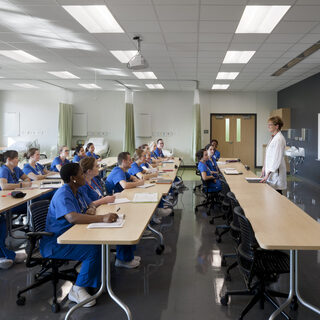Tradeline's industry reports are a must-read resource for those involved in facilities planning and management. Reports include management case studies, current and in-depth project profiles, and editorials on the latest facilities management issues.
Latest Reports
Operating Principles for Core Facilities
Specialized biomedical core facilities accelerate scientific research and make the most of funding resources, but it takes considerable expertise in both technology and business to attain these results. To ensure the centralized model provides the most productive and cost-effective support to researchers, University Health Network (UHN) in Toronto has assembled a toolkit of proven strategies and operating principles. The foremost requirements are a robust knowledge base in science and technology and a strong business orientation.
The Woodlands Center Allied Health Nursing Lab
Sam Houston State University has completed the first of a two-phase fit-out of the Woodlands Center to create an Allied Health Nursing Lab for the College of Health Sciences. The 5,680-sf Phase 1 project includes a nursing skills lab/classroom, a shared support and storage room, high fidelity simulation lab, and office suite. Each lab has active headwalls that aid in creation of the mock environment. The simulation lab contains four patient rooms, a home health area, and a control room.
Renovation/Utilization Strategies for Program Growth and Productive Collaboration
A new master space plan for the University of Texas at Austin’s College of Natural Sciences leverages program adjacencies and shared infrastructure to improve collaborative interdisciplinary research while maximizing space use. This “soft growth” renovation approach allows the college to increase capacity and improve efficiency without demolishing or adding new buildings.
Laboratory Sciences Building
Lorain County Community College’s new 53,000-gsf Laboratory Sciences Building houses facilities for the departments of biology, chemistry, and physics, with 24-person teaching labs and lab support rooms, a student commons, break-out space designed to serve as open study space, and a rooftop teaching greenhouse.
Generic, Flexible Lab Design Can Waste Money and Time
Paying a premium for the flexibility to remain truly generic can be both expensive and counterproductive to lab design goals, say the designers of the Wisconsin Institutes of Medical Research (WIMR) multi-phase project at the University of Wisconsin (UW). Instead, they increased space efficiency and density by walking a fine line between custom and generic lab design, with a modular framework that met certain parameters but could be adapted to the science conducted within the spaces.




